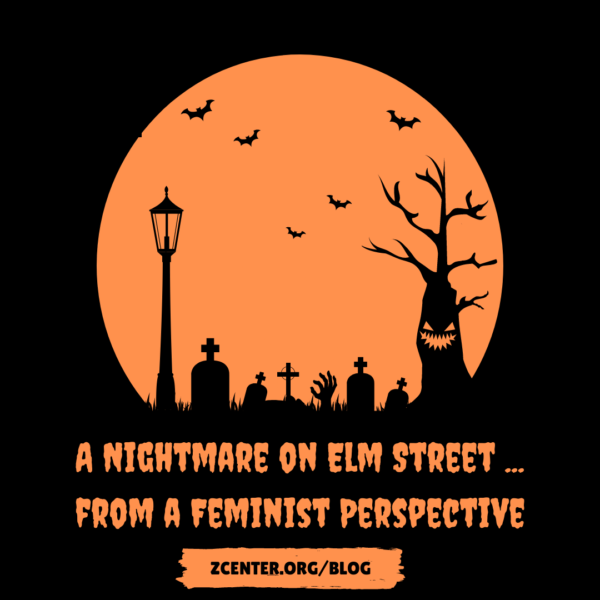Let’s face it. It is spooky season. Spooky season differs from fall since it doesn’t focus on apple picking, cozy outfits, and green leaves turning orange giving us that Halloween Town vibe. Instead, spooky season focuses on scary corn mazes, experiencing terror, and temperatures dropping while the sky becomes more and more gray. Overall, fear becomes heightened, yet exciting. The most popular part of spooky season is Halloween movies. We are not talking about Edward Scissorhands, Corpse Bride, Casper, and Hocus Pocus. The Halloween movies we ARE talking about are those such as Halloween, Friday the 13th, The Texas Chainsaw Massacre, The Exorcist, The Amityville Horror, and so on. These movies are truly horror.
Why are horror movies created? What is the point? Believe it or not, we the people love horror. In fact, we turn to horror movies for many reasons. First, whether we know it or not, we love experiencing fear and disgust. Second, it gives us control over our anxiety. We get to choose to feel anxious and shift away from the anxiety we can not control. That is why horror movies were created and why we turn to them. It helps benefit us while entertaining us.
One of the most iconic horror movies of all time would be A Nightmare on Elm Street. This movie will forever be a classic since the plot is so original. It is not about a typical ghost, witch, or monster. Instead, it is about a child serial killer that preys on teenagers as they sleep, and in addition is able to kill them in reality. What makes this movie even more dreadful is that the serial killer, known as Freddy Krueger, is a burnt and disfigured man that has a hand with blades for fingers.
A question that isn’t asked is how do we interpret this film from a femininist perspective? From a woman myself, this film is indirectly feminist. Though the film focuses on a “group” of teenagers, it really focuses on one particular character which is Nancy. Nancy doesn’t play the typical fearful and fragile female character. In fact (spoiler alert!), Nancy is the only character that is able to defeat Freddy Krueger and survives. Just like the famous Survivor slogan, Nancy was able to outwit, outplay, and outlast. Though Nancy was scared throughout the movie, which you can’t blame her for when you keep on experiencing abnormal encounters with this evil child serial killer in your dreams, we the audience are able to see her become more brave than her peers, which include your typical strong and courageous males, and become the leader. This contradicts society’s gender norms and stereotypes, and it is for that reason, this movie supports feminism by ending the film with a final girl who was brave enough to face her perpetrator.
Now I don’t know if you have caught on to some of the words and expressions I have used before. For example, why do I keep referring Freddy Krueger to a child serial killer when he is killing teenagers? Why did I recently refer to Freddy Krueger as a perpetrator instead of a killer? The truth is (again spoiler alert!), Freddy Krueger was not only a child serial killer, but a child molester. Krueger had molested this group of teenagers when they were young, and as a consequence, the parents of these children sought revenge by burning Kreuger alive. Since such trauma had occurred during a young age, the parents all decided it was best to not talk about what had happened to their children with their children which then led to repression of those memories within the teenagers. At first the teenagers don’t understand why they are being tormented by Krueger and what made them deserve it. However, throughout the movie Nancy and friend Quentin unravel the truth that Krueger is not taunting them for no reason, but is seeking vengeance for what the parents did to him by killing their children one by one.
For that reason, it leads us to ask the question of how does the film portray consent and/or sexual assault? In the 2010 version of A Nightmare of Elm Street, both consent and sexual assault were taken very seriously. Consent can not be given if one is younger than 17 years old, and in this case, they were definitely not in high school but in preschool. What also angered the parents is that the sexual assault came from a man they thought was trustworthy. Krueger was the preschool’s groundskeeper that was loved and adored by many of the children. No one would suspect he had a dark, sinister side to him. Due to that, the parents took this situation seriously. I mean they literally tortured the man by burning him alive because he broke their trust by intruding on their children’s innocence. Regardless of whether the child was a girl or a boy, social or shy, rich or poor, sexual assault is sexual assault in the eyes of these parents. Now when it comes to the parents handling the situation correctly, that’s a different discussion.
What does A Nightmare on Elm Street teach us about survivors? Well the film demonstrates the parents taking justice into their own hands. Even though survivors and those close to the survivor do deserve justice, one must achieve it morally and ethically, unlike what the parents did. The parents had the right intentions, yet killing someone is not the best solution. Also, trying to help your child repress their memory isn’t always going to give you as the parent the best outcome. You see when a person with repressed memories starts to think more and more about the past, the truth will slowly reveal itself, just like it did with Nancy and Quentin. The parents thought they were protecting their kids but really they are becoming traumatized. They are being traumatized by both having to deal with Kreuger and learning about the past. When it comes to repressed memories, it works in three ways: 1. If you don’t want to know more, you don’t think about it, 2. If you want to remember, you try to think more about it, 3. Some memories are brought up because the brain thinks you’re ready. This goes back to the first question which is what does it teach us about survivors. It teaches us to always put your (the parents, in this case) thoughts and opinions aside and put the survivor first. If the survivor doesn’t want to talk about it, then don’t force anything. Yet, if the survivor wants to learn more about what happened, which is what we see in the film, then you should be able to share with them. You can’t determine what is best for the survivor. If they are or are not ready, is it up to the survivor.
In conclusion, from a feminist point of view A Nightmare on Elm Street is a great horror film. It has characters that don’t follow the typical gender norms, parents that never doubted their children, and proves that facing your fear can be empowering. So the next time you watch A Nightmare of Elm Street, don’t focus on how scary Krueger was, but more how sick. Don’t focus on how scared these teenagers were, but how brave. It takes a lot of courage to face your perpetrator.
Written by Viviana Huerta, Advocacy Services Coordinator.
All ZCenter blog posts are written by state certified staff, interns, and volunteers. For questions on authorship or content, please email kjones@zcenter.org.
https://www.architecturaldigest.com/story/spooky-season-is-here
https://nautil.us/issue/95/escape/why-horror-films-are-more-popular-than-ever

